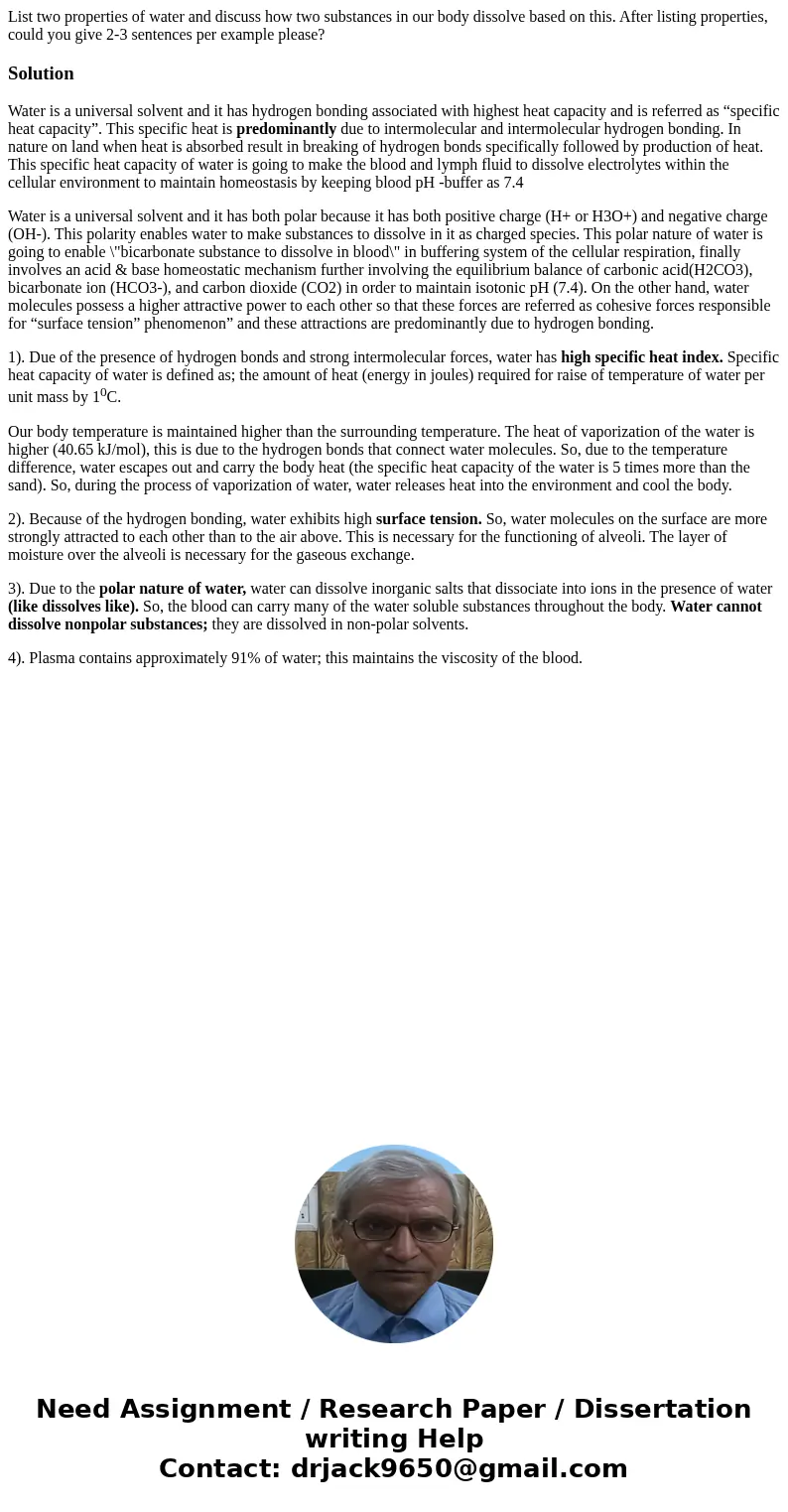List two properties of water and discuss how two substances
List two properties of water and discuss how two substances in our body dissolve based on this. After listing properties, could you give 2-3 sentences per example please?
Solution
Water is a universal solvent and it has hydrogen bonding associated with highest heat capacity and is referred as “specific heat capacity”. This specific heat is predominantly due to intermolecular and intermolecular hydrogen bonding. In nature on land when heat is absorbed result in breaking of hydrogen bonds specifically followed by production of heat. This specific heat capacity of water is going to make the blood and lymph fluid to dissolve electrolytes within the cellular environment to maintain homeostasis by keeping blood pH -buffer as 7.4
Water is a universal solvent and it has both polar because it has both positive charge (H+ or H3O+) and negative charge (OH-). This polarity enables water to make substances to dissolve in it as charged species. This polar nature of water is going to enable \"bicarbonate substance to dissolve in blood\" in buffering system of the cellular respiration, finally involves an acid & base homeostatic mechanism further involving the equilibrium balance of carbonic acid(H2CO3), bicarbonate ion (HCO3-), and carbon dioxide (CO2) in order to maintain isotonic pH (7.4). On the other hand, water molecules possess a higher attractive power to each other so that these forces are referred as cohesive forces responsible for “surface tension” phenomenon” and these attractions are predominantly due to hydrogen bonding.
1). Due of the presence of hydrogen bonds and strong intermolecular forces, water has high specific heat index. Specific heat capacity of water is defined as; the amount of heat (energy in joules) required for raise of temperature of water per unit mass by 10C.
Our body temperature is maintained higher than the surrounding temperature. The heat of vaporization of the water is higher (40.65 kJ/mol), this is due to the hydrogen bonds that connect water molecules. So, due to the temperature difference, water escapes out and carry the body heat (the specific heat capacity of the water is 5 times more than the sand). So, during the process of vaporization of water, water releases heat into the environment and cool the body.
2). Because of the hydrogen bonding, water exhibits high surface tension. So, water molecules on the surface are more strongly attracted to each other than to the air above. This is necessary for the functioning of alveoli. The layer of moisture over the alveoli is necessary for the gaseous exchange.
3). Due to the polar nature of water, water can dissolve inorganic salts that dissociate into ions in the presence of water (like dissolves like). So, the blood can carry many of the water soluble substances throughout the body. Water cannot dissolve nonpolar substances; they are dissolved in non-polar solvents.
4). Plasma contains approximately 91% of water; this maintains the viscosity of the blood.

 Homework Sourse
Homework Sourse